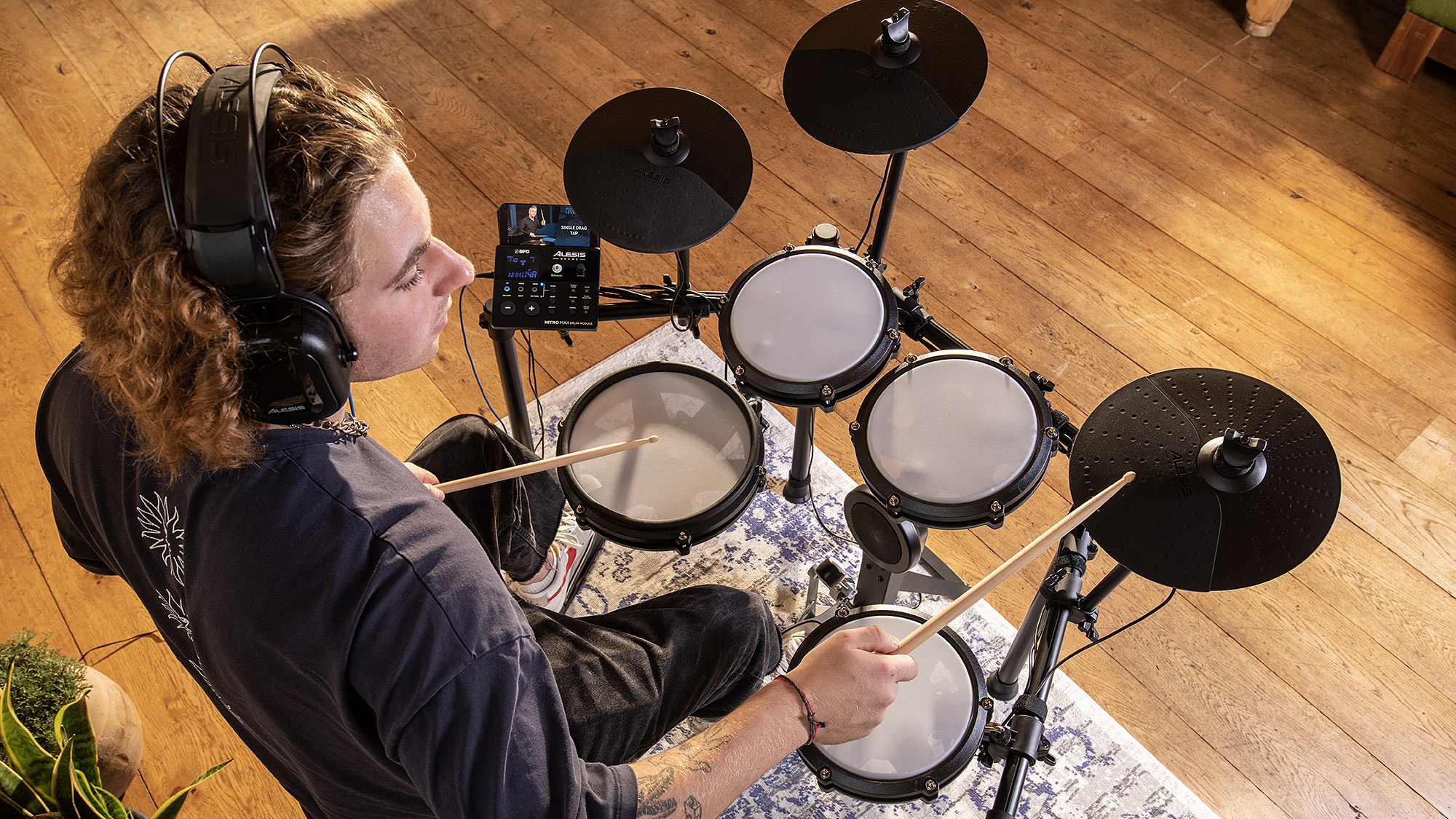MusicRadar Verdict
The Alesis Nitro Max is a well-stocked electronic drum set that you’re not likely to outgrow in a hurry. The BFD sounds are a strong selling point, and while there are a few concessions, it’s a very solid kit for the money
Pros
- +
Great sound library
- +
Mesh-head pads
- +
Bass drum tower
- +
Bluetooth connectivity
- +
Impressive software bundle
Cons
- -
Fiddly to use at times
- -
Some limitations to pad zones
MusicRadar's got your back
Alesis Nitro Max review: What is it?
The market for entry-level electronic drum sets is a fast and fierce one, and one which, until not that long ago, was dominated by the three big names in e-kits: Roland, Yamaha and Alesis.
But with the emergence of brands such as Donner, NUX, and Thomann-owned Millenium, that battleground has become a lot more aggressive.
Bad news for big-name brands, then, but excellent news for us end users. A rising tide sails all ships, and more competition means not only more options, but better value to boot.
The response to this upward pressure can be seen in the most recent releases from the ‘Big Three’, with Yamaha’s DTX402 and Roland’s TD-02 making persuasive plays for our affordable budget. Alesis has long been the purveyor of added value, teasing people away from the Japanese giants with its Surge, Command and Strike configurations. But what happens when the under-cutter begins to get undercut? The Alesis Nitro Max is here to tell us.

On the surface, the latest electronic drum set offering from Alesis could be mistaken for more of the same. It’s got four frame-mounted, mesh pads taking the role of snare (10-inch) and toms (8-inch). These are joined by a 6-inch bass drum tower - a welcome addition over footswitch-style bass drum triggers at this price point - plus three cymbal pads offering a single-zone ride, chokeable crash and hi-hats.
The pads connect to the Nitro Max module via a 25-pin cable snake, plus there are additional inputs for an extra crash cymbal and fourth tom (available as an expansion pack set including mounting hardware) on the module.
So far, so similar to the Alesis Nitro Mesh, the kit which the Nitro Max replaces and a model we have long held as one of the top beginner e-kits out there. But this is where things get interesting...
Want all the hottest music and gear news, reviews, deals, features and more, direct to your inbox? Sign up here.
We said that on the surface it could appear to be more of the same from Alesis, who offers the once-premium mesh-headed pads in configurations across its entire product range. However, in 2020 Alesis’ parent brand, InMusic acquired BFD: the multi-sampled drum kit instrument that alongside software such as Toontrack’s EZ Drummer and Superior Drummer, helped kickstart (and continue) a revolution in sampled drum sounds two decades ago.
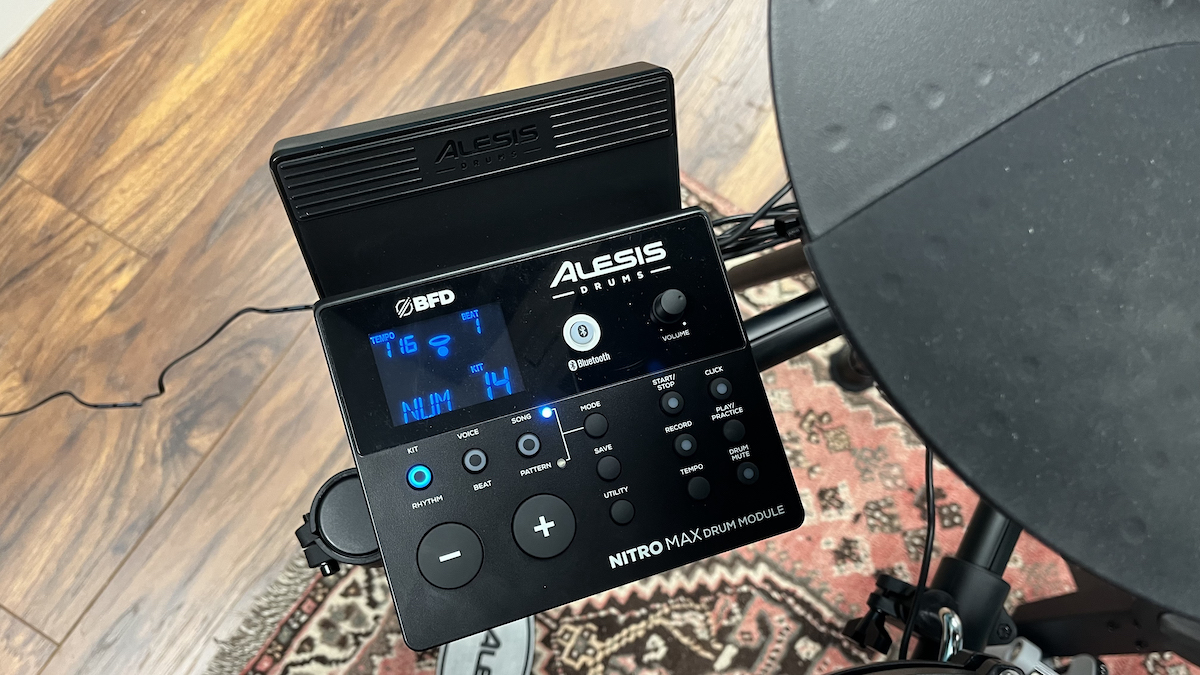
This is significant, as the Nitro Max is the first kit to start joining the dots between a long-established electronic drum hardware company and a renowned drum-sampling software brand. As such, the Nitro Max’s module is stocked with sounds from the BFD library. Now, does this mean that Alesis has pulled the trigger on equipping a $/£399 electronic kit with built-in, multi-layered samples of some of the finest drums on the planet, captured in a world-class studio? No, at least not quite, because that wouldn’t make great business sense, would it?
Instead, we get samples that originate from the BFD library, which in itself is a huge boast when compared to its competitors. It’s also savvy repurposing, allowing for a ready-made sound library that’s never featured in Alesis’ previous drum modules. As well as the internal sounds, Alesis has bundled the Nitro Max with BFD Player - a cutdown, free version of BFD which will get you started with hooking your kit up to a computer.
Alesis Nitro Max review: Performance & verdict
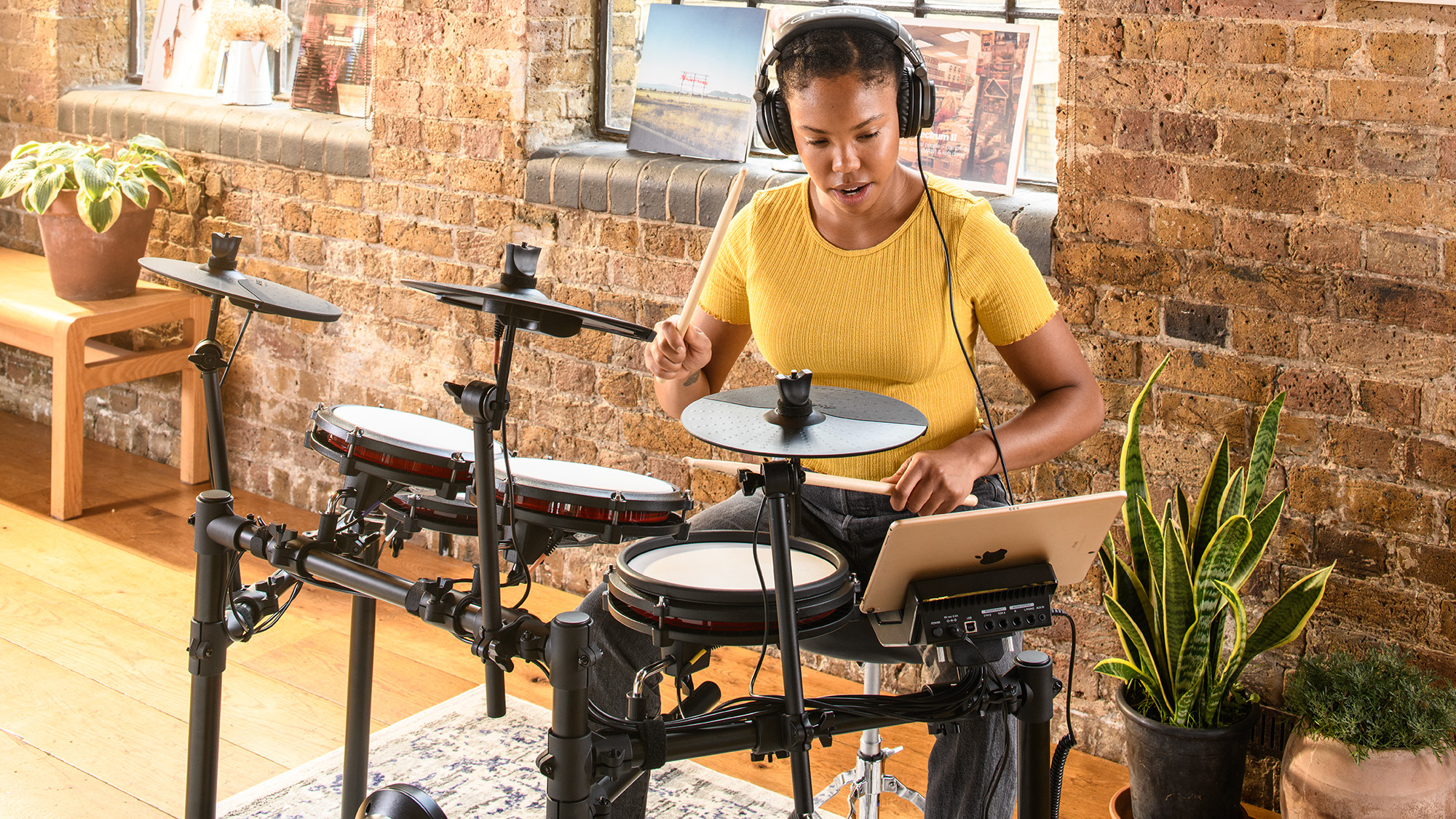
But with all that said, it’s the implementation that counts. The Nitro Max is impressive on the sonic front. The module itself comes with plenty of features. First up, there are 32 preset kits, plus an additional 16 user kit memories for you to create your own, and you can do this from the 440 internal sounds - all of which are lifted from BFD.
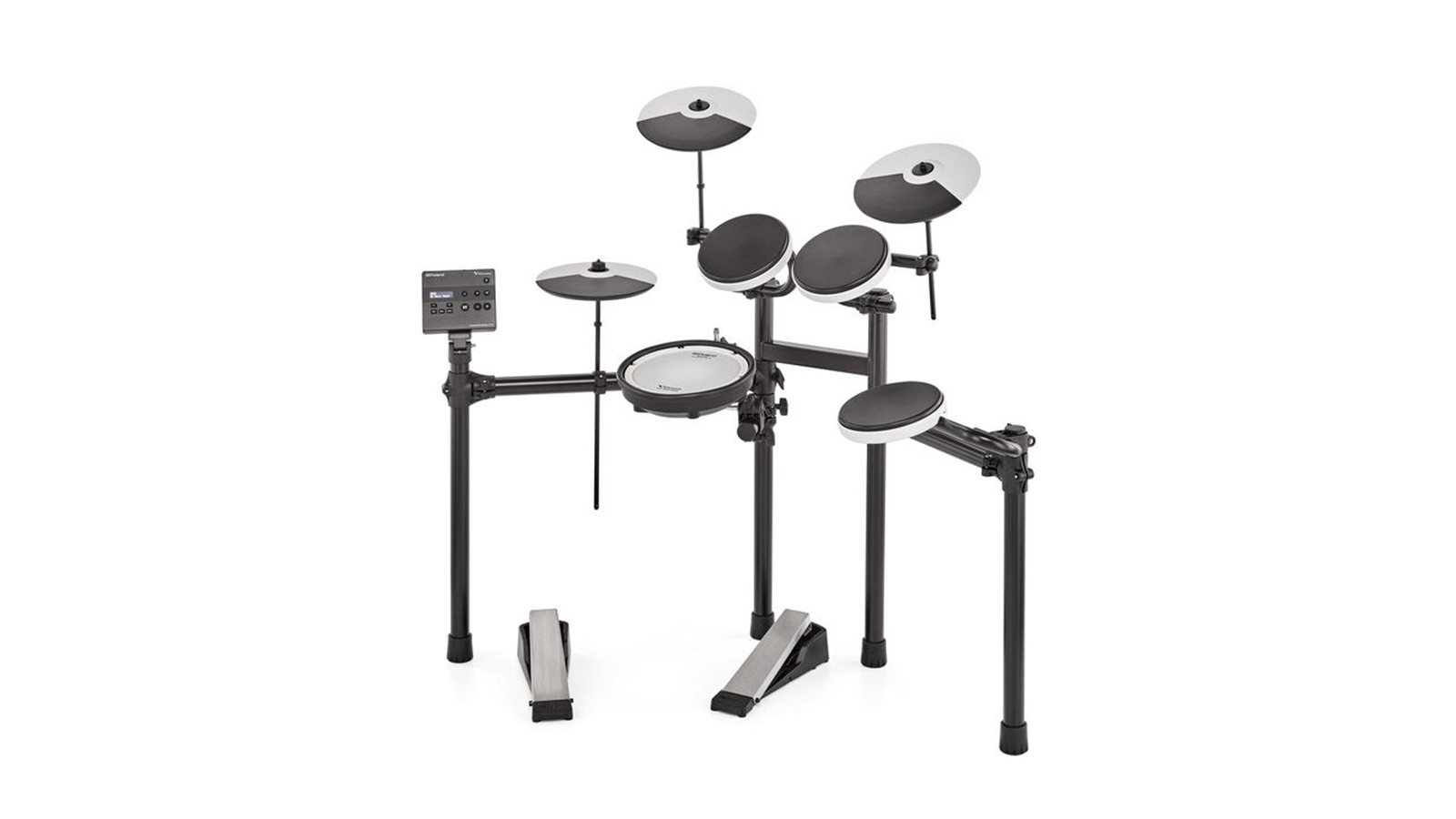
Roland TD-02KV - A solid and reliable platform that hold your hand trough your journey from beginner to intermediate. The KV model includes a mesh snare.
Yamaha DTX402K - Compact and affordable, plus sweet sounds and excellent on-board training tools.
As you’d probably expect, the sounds cover everything from ‘Studio’ type all-rounder kits through lively jazz, snappy funk, processed metal, percussion and electronic EDM/hip-hop. While some of the kit sounds are veering towards over-processing, there’s a comprehensive range on offer to keep you interested, and the BFD influence is definitely present. It’s most noticeable on the snare and kick drum sounds, which are rich in character and (especially in the case of the snare drums) react well dynamically. When it’s good, it’s very good indeed, and we have to remind ourselves that we’re playing on a sub-$/£400 kit.
While the included sounds are a big part of the Nitro Max, there’s plenty more to talk about when it comes to the module, too. Alesis has built-in Bluetooth, so you can wirelessly stream your music service directly into your headphones via the module, and you may have noticed the shelf-like design at the back of the module.
We say shelf-like: it’s a shelf. This isn’t the first time we’ve seen this idea - Roland’s TD-17 module features a stepped section which allows for a place to rest your phone, or a pair of sticks. However, Alesis has gone big with it, offering upright support to hold your phone or tablet securely. It makes sense, because the software bundling continues with 100 free lessons and a 30-day trial from drum-learning app, Melodics, as well as a 90-day subscription to Drumeo. Even if you don’t extend these trials into a paid subscription, Alesis is anticipating that your phone or tablet are likely to be nearby while you’re at the Nitro Max and it definitely makes things easier if you’re simply jamming to your favourite songs from your device.

The Nitro Max module is also home to a number of other features - there’s a master reverb effect - the amount of which can be adjusted for each pad - as well as a master EQ. Plus there’s a metronome, built-in jam tracks, a simple recording facility for capturing your playing and the on-board Learning modes.
This follows a similar format to training modes found in modules from other brands, where your timing is measured against the metronome. It’s here that we’ll highlight the slightly less intuitive nature of the Nitro Max. Scrolling through presets and swapping sounds is easy, but when using the songs and training functions it’s easy to get lost in a sequence of button presses. This is something that a bit of time will cure as you get used to the transition between ‘Normal’ and ‘Learning’ modes, as well as the designation of beats, rhythms and patterns.
The good news is that while this feature is no doubt useful, the fact that Alesis has also made interactive learning via Melodics and Drumeo accessible to owners of the Nitro Max means that you aren’t solely dependent on the learning functionality in the module.
Conclusion
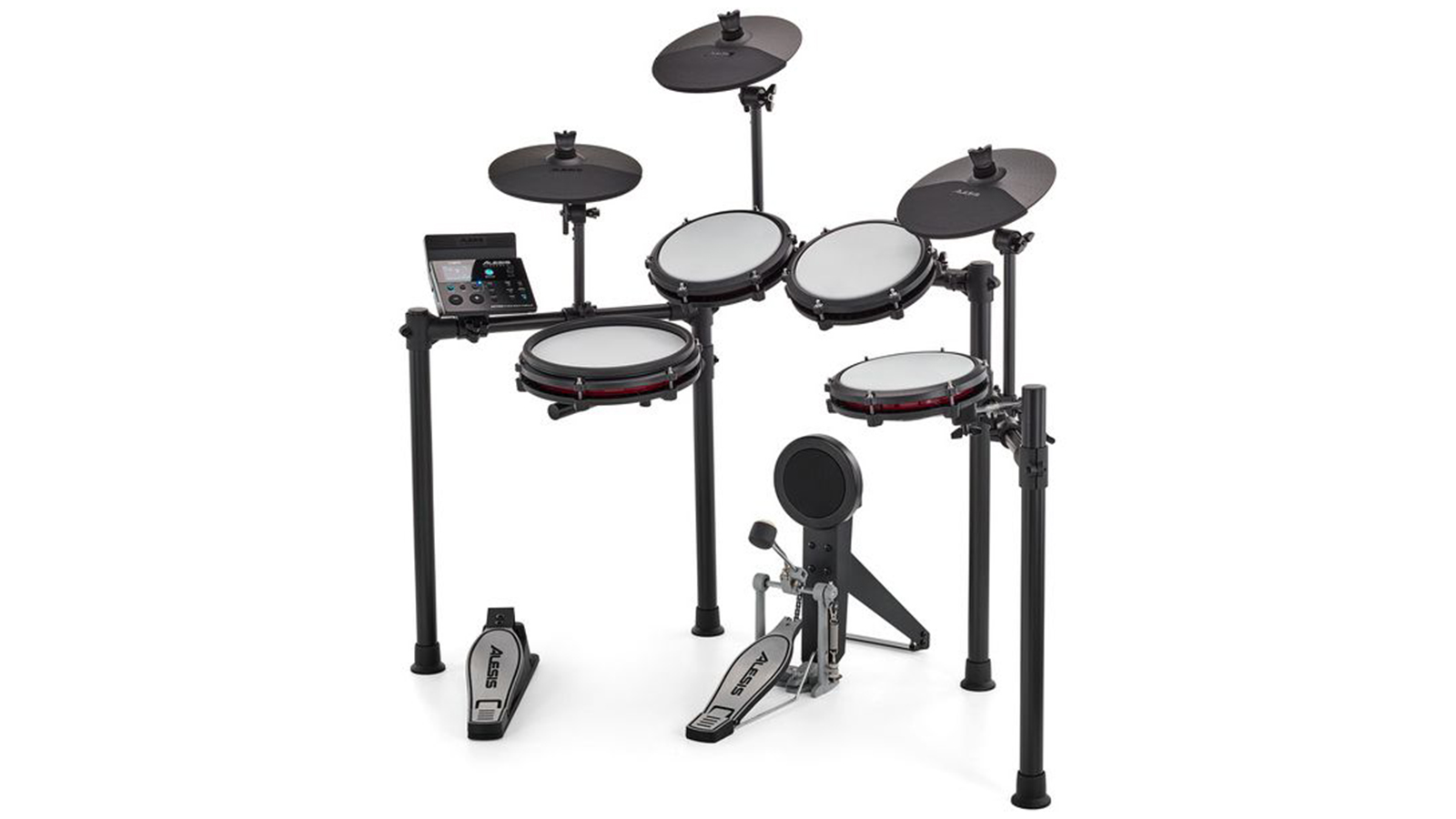
Alesis and its many kits are likely to appear high on the list of potential e-kit customers, and the introduction of the Nitro Max is clearly a glimpse of what we can expect to come from Alesis. It sounds great, is easy to use from a playing perspective, and the build quality of the stand is sturdy enough to absorb some heavy hitting. The fact that it’s equipped with tension-able mesh heads means you can start tweaking to replicate the feel of an acoustic kit - important if you’re jumping between electronic at home and acoustic for lessons.
It’s not perfect - the snare pad is two-zone so if you need to play cross-stick sounds, you’ll need to assign it to the rim. But, it does have a rim, which is a definite plus above some kits at this price point. Likewise, the ride is a single-zone pad with no bell zone (it will play a bell sound when hit at higher velocities). But, we think the inclusion of a bass drum tower over a footswitch is an important inclusion, meaning you’ll be able to practice with a traditional bass drum pedal, and with a bit of tweaking to our double pedal, we were able to fit a twin onto it too. Overall, it’s a very enticing package which combines some well-thought-out hardware, very good sounds and some software extras that will make drumming as fun as you hope it will be.
Our audio demos
We've picked three of our favourite kit sounds and recorded some playing so you can hear this kit in action.
Alesis Nitro Max review: Hands-on demos
MusicRadar
Alesis
COOP3RDRUMM3R
Sweetwater
Alesis Nitro Max review: Specification
- Pads: Five (10” snare, 8” toms, 6” bass drum, 10” cymbals) with expansion slots for extra cymbal and tom pad
- Heads: Mesh (snare and toms)
- Cymbals: Ride, crash and hi-hat
- Module: Alesis Nitro Max
- Sounds: 440
- Kits: 32 factory, 16 user
- Connections: Pad inputs (cable snake), L/R audio output, headphone output, aux input, 2x trigger inputs, USB, Bluetooth
- Contact: Alesis

Stuart has been working for guitar publications since 2008, beginning his career as Reviews Editor for Total Guitar before becoming Editor for six years. During this time, he and the team brought the magazine into the modern age with digital editions, a Youtube channel and the Apple chart-bothering Total Guitar Podcast. Stuart has also served as a freelance writer for Guitar World, Guitarist and MusicRadar reviewing hundreds of products spanning everything from acoustic guitars to valve amps, modelers and plugins. When not spouting his opinions on the best new gear, Stuart has been reminded on many occasions that the 'never meet your heroes' rule is entirely wrong, clocking-up interviews with the likes of Eddie Van Halen, Foo Fighters, Green Day and many, many more.
